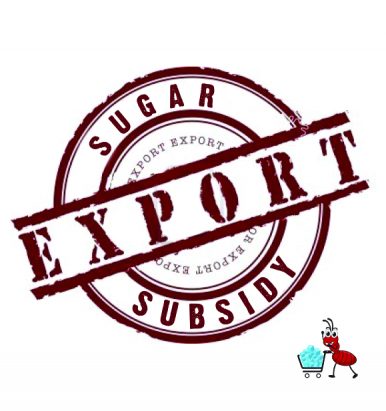During the current Sugar Season with the production estimates continuously being revised upwards, and the prospects of the growing surplus, has caused the Govt., Sugar industry and all the stakeholders in the value chain to apply their minds to resolving the problem of plenty. The bumper production not only resulted in reducing global prices but also weakening of domestic prices. Sugar prices before dropping by a whopping 18% since the beginning of the current crop in October 2017 has got stablised after introduction of MSP.
The Indian Sugar Mills Association (ISMA) few weeks back has revised its sugar output projection for the 2018-19 season to 35.5 million MT, however, the results of below par rains in key sugarcane belts in MH and UP are yet to be seen. Going by the latest trends it seems that the total production for the crop 2018-19 will definitely be crossing the 17-18 season production. How high it will go, the best guesstimate will only be available by Jan 19.
The domestic market has been facing a huge surplus. Sugar millers on back of the monthly quota have been releasing the sugar cautiously and not selling in hurry keeping the domestic price in a range. However, now, as the new Sugar Season starts, Sugar mills, while they crush, will been constantly under pressure to sell their inventory for constant cane delivery. Given this scenario prices will remain under pressure throughout the remainder of this year.
In order to alleviate the glut of sugar, the Central government had directed the sugar mills to export up to 5 million MTs of sugar till September 2019 under the Minimum Indicative Export Quota (MIEQ) policy as was done during 2015-16 and in 2017-18 sugar season in order to channelize some sugar out of the country.
However, the fine lines of eligibility for the subsidy is yet to be seen, as per the press release, govt. has budgeted for 4163 Cr. which for an export of 5 mn MTs of sugar translates to Rs. 8326/tn of subsidy towards the cane crushed. In addition, depending on their location will be eligible for a minimum of Rs. 1000/tn subsidy if they are within 100 kms from the port ; Rs. 2500/tn if they are more than 100 kms but less than 1000 kms from port ; and ; Rs. 3000/tn if they are more than 1000 kms from the port. In total the cane subsidy is going to be Rs. 4163 Cr + Rs. 1375 Cr which equates to Rs. 11076/tn. Despite the Global Prices of sugar at 2 ½ year lows, with the new revised subsidy has brought export parity above the Minimum Selling Price (MSP) set by the govt. for domestic market and if the world market rallies from here, Domestic prices will automatically firm up with the exports, negating the need for incentives further. In short, the domestic market seems to get aligned with the market from here and likely to remain so till India remains a firm volume contributor in the global trade of sugar.
Millers have been hoping that the Government announces a revised subsidy to be paid to the sugar cane farmers as part of the cane price, like it did in 2015-16 & 2017-18 sugar season. Coping with low domestic sugar prices and building cane arrears, the millers are waiting for a clear signal from the central government regarding some incentive for export.
Now, let’s have a look on the export demand and how above subsidy calculation helps the Indian exporter. Today domestic price in MH which traditionally is the 70% contributor to sugar for export is Rs. 30000/tn. Fobbing expenses including inland transportation and cost of money sums up to Rs. 2400/tn. Thus FOB price at spot Fx rate of 72.5 becomes $450/tn. London Sugar is Trading at around $320/tn FOB Refine sugar 45 Icumsa. As on date, Demand from Overseas Market for Indian Plantation White sugar is $310/ FOB JNPT/Mumbai.
Thus to bridge the gap of the domestic price and world market price, the govt support will come into play. With a help of Rs. 11000/tn or USD 150/tn the domestic prices can bridge the gap to export the surplus to the world market.
Looking at the above calculation it looks that it’s a win-win situation for the Sugar mills to export sugar or to trade their licenses to merchant exporter. But, as we move to a surplus scenario, the biggest question which is to be addressed is how long the industry will continue depending on govt intervention. In the same way, Industry will surely want to know, how long their raw material price (Sugarcane) will be dictated by the govt.
Till the Industry and Govt arrive to a solution where demand and supply is allowed to play the leading part, sugar will continue to taste bitter to all stakeholders during surplus and will remain a headache for Govt. during deficits.












